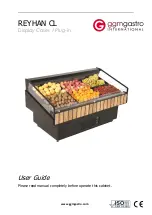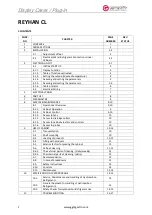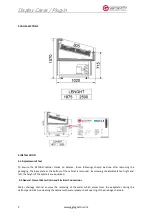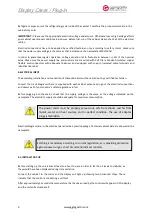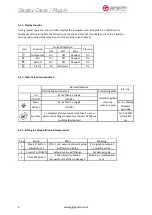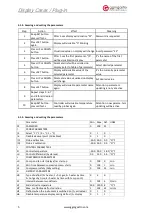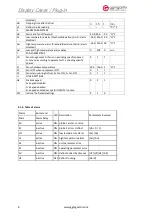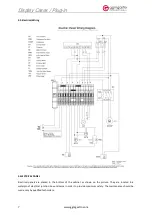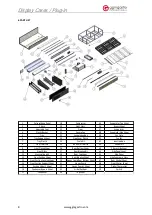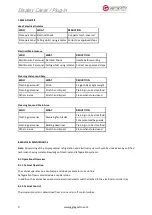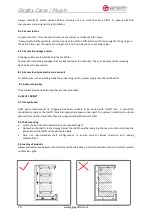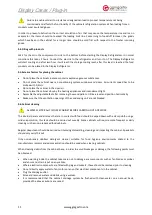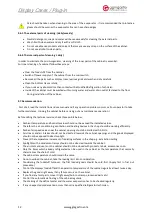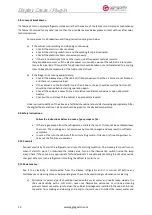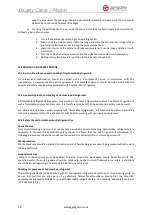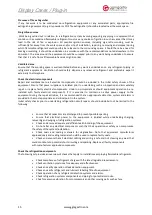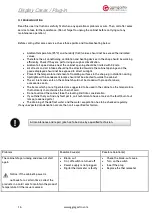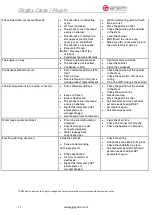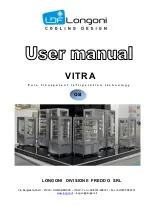
Display Cases / Plug-in
11
www.ggmgastro.com
Failure to enable cold air to circulate as designed can lead to product temperature not being
maintained and affects the functionality of the cabinets refrigeration system. When loading frozen
products wear insulated gloves.
In order to prevent obstruction the correct circulation of air that may cause the temperature rise and ice on
evaporator, the items should not exceed the loading limit line. Concerning to foodstuff turnover, the goods
which have been in the cabinet for a longer time should be sold first with respect to the fresher incoming
goods.
9.4.Filling with products
Wait for the oil in the compressor to sink to the bottom before starting the Display Refrigerators. In normal
conditions this takes 2 hours. Connect the electric to the refrigerator and turn it on. The Display Refrigerator
will start cooling and after two hour it will reach the storage cooling level, after this level is reached the food
products can be placed in the Display Refrigerator.
9.5.Exterior factors for placing the cabinet
Do not place the cabinets in places contains explosive gaseous substances.
Do not place the cabinet near air-conditioning system, windows and doors. Air currents speed has to be
limited with 0,2m/s.
Do not place the cabinet in the open air.
Do not place the cabinet close by the heating appliances and incandescent light.
Assemble the adjustable feet after removing the wood pallets. Utilize a level and position horizontally.
Make sure that the ventilation openings of the condensing unit are not blocked.
9.6.Cabinet cleaning
ALWAYS ELECTRICALLY ISOLATE CABINET BEFORE CARRYING OUT ANY WORK
The internal panels and all areas that are in contact with food should be wiped down with a damp cloth using a
mild soap solution, this task should be carried out weekly. Some cabinets will require more frequent or daily
cleaning such as non-prepacked food cabinets.
Regular deep cleans should be carried out involving dismantling, cleaning and inspecting the cabinet. Specialists
should only carry this out.
Only non-abrasive odorless detergent cleaner suitable for food hygiene environments diluted to the
manufacturers recommended concentration should be used when cleaning cabinets.
When cleaning debris from the cabinet base, in order to avoid blockages or damage, the following points must
be observed:
When working inside the cabinet takes care not to damage any components such as fan blades or probes
and ensure no strain is put on any cables.
Where electrical components are fitted with plug and sockets, these should be removed prior to cleaning.
Do not directly apply water to fan motors or any other electrical components in the cabinet.
Plug the drainage outlet.
Rinse and remove water and debris using a wetvac.
It is recommended that the cabinet drainage system be flushed with clean water on an annual basis,
provided the above cautions are noted.

